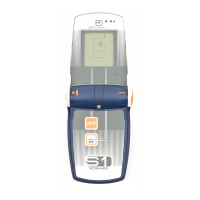32 33
ENGLISH
Decision-making stra-
tegies are necessary
when planning a tour.
For more information
contact the avalanche
warning services and
Alpine organisations
in each country.
PROPER TOUR PLANNING REDUCES THE RISK!
Average time needed to free a person
from a snow depth of approximately 1m:
The illustration shows the
effect of useful equipment
in rescuing an avalanche
victim from a depth of 1m.
You should check the emergency equipment on
the day before the tour to ensure that it is com-
plete and functionall (e.g. avalanche transceivers).
EVERY MEMBER OF THE
GROUP SHOULD HAVE
THE FOLLOWING BASIC
EQUIPMENT:
Avalanche transceiver
Mere possession of an ava-
lanche transceiver does not
suffice. Each member of
the group must be familiar
with his device and practise
with it regularly. (See
www.lawinensicherheit.de
for practice opportunities)
Avalanche shovel
Rescuing avalanche victims
is only possible with a shovel.
Avalanche probes
A probe is required for
fastest possible precise
location with the pinpoint
search procedure.
First-aid kit
For administration of first-
aid to the injured
Bivouac sack
Protects against hypother-
mia and can be used as a
transport aid.
Supplemental equipment
for added safety:
Mobile phone for organi-
zing professional help
Each member of the
group has an avalanche
transceiver on their
person and a shovel and
probe in the backpack.
Avalanche transceiver, probe + shovel
11 minutes
Avalanche transceiver + shovel
25 minutes
Illustration: Dominique Stumpert
Only avalanche transceiver, hands, ski, snowboard
1–2 hours
Why and where …
Natural avalanche very unlikely.
Human triggered avalanches
unlikly. Generally stable snow
with isolated areas of instability.
Natural avalanches unlikely.
Human triggered avalanches
possible. Unstable slabs possi-
ble on steep terrain.
Natural avalanches possible.
Human triggered avalanches
probable. Unstable slabs proba-
ble on steep terrain.
Natural and human triggered
avalanches likely. Unstable slabs
likely on a variety of aspects
and slope angles.
Widespread natural and human
triggered avalanches certain.
Extremely unstable slabs cer-
tain on most aspects and slope
angles. Large destructive ava-
lanches possible.
What to do …
Travel is generally safe,
normal caution is advised.
Use caution in steeper
terrain on certain aspects.
Be increasingly cautious
on steeper terrain.
Travel in avalanche terrain is not
recommended. Safest travel is
on windward ridges of the lower
angle slopes without any steep
terrain above.
Travel in avalanche terrain
should be avoided and travel
confined to low angle terrain
well away from avalanche
path run-outs.
Level of Risk
1
LOW
2
MODERATE
3
CONSIDERABLE
4
HIGH
5
EXTREME
AVALANCHE HAZARD SCALE

